
Core Area verses Home Range
Knowing the difference between the core area and the general range of moose is crucial in locating moose. Moose travel a wide area but do concentrate into areas that can be considered core.
In previous articles I have talked about the various habitat areas that moose frequent depending on the season.
Carrying that discussion further we should discuss the core-area.
In short, these areas can be defined as the concentrated areas that moose frequent. The average home range a moose covers in year to year movements vary considerably depending on the geographic location of the moose herd.
Examples of Moose Home Range
- On the Kenai Peninsula, Alaska the average range of an adult male moose is 53.1 square miles. Bangs et al. (1984)
- In Central Alberta the average range of an adult male moose is 5.8 square miles. Mytton and Keith. (1981)
- In Northwestern Minnesota the average range of an adult male moose is 1.2 square miles. Phillips et al. (1973)
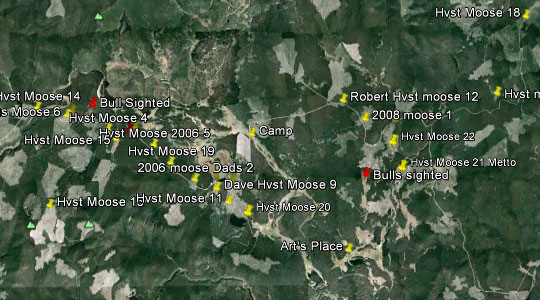
This is a snapshot of one of our core areas. On Google Earth we track all our moose harvests and sightings.
There are key differences between the home range and core areas.
The home range is the total area that a moose will cover during the year, where the core-area will be much smaller. Those will be the keyed spots; the prime feeding areas, the areas offering the best food, shelter, water and safety. Everywhere else will be incidental areas of travel.
Most of us that have hunted big game have witnessed key areas and travel corridors. The heavily traveled trails through thickets, open areas and marshland are indications of areas that are not core.
You have seen them, I have seen them... the trails that are going somewhere. Well beaten into the soil, transient pathways to... you know it! The Core-Areas!
As hunters we need to find these areas. You will know when you find them because either you will find the animals there or this is where you will find concentrated moose sign.
Knowledge of Core Areas
Successful hunters know how to locate and narrow down these spots. It will always require a lot of leg work... so be prepared to work at it if you want to find them.
If you are serious about finding those areas that the game frequent the most, you have to put on the miles. Take mental note of everywhere you go and everything you see. While walking about, look behind you once in a while... you get to see a whole different view of where you are and where you have been.
We have many more tips like this with detailed real life examples and stories in our book, The Ultimate Guide to Moose Hunting.
Track where you have been and where you are going using a quality GPS.
Transfer your waypoints to your GPS mapping software on your computer and load them into Google Earth.
The GPS software makes this a simple task to complete.
Look to you left and right, study the ground as you go and watch for patterns. If you are observant, eventually you will be able to identify, The Core Area.
Seriously... If you want to be a successful moose hunter year after year, you MUST be able to identify, locate and concentrate your efforts in these spots.
Put some miles on those boots guys and gals, that is the only way... trust me!
Want to learn how to hunt moose? Or are you wanting to increase your moose hunting skills?
Look no further!
Our moose hunting tips book is written with
not just the novice in mind, there are tips in the book that even the
most seasoned moose hunter will find of value.
The book includes 57 chapters, with more than 150 pages of information, jam packed with tips, techniques and discussions - The Ultimate Guide to Moose Hunting!
And don't forget to order one of our Fiberglass Moose Calls. In stock and ready to ship.
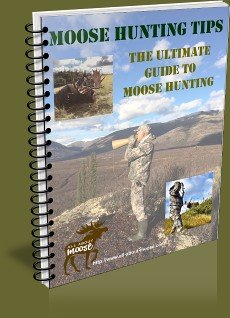
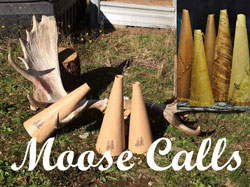
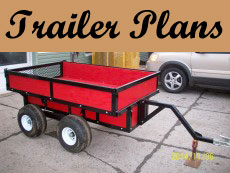
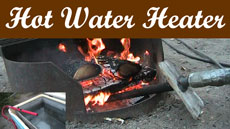



Comments
Have your say about what you just read! Leave me a comment in the box below.